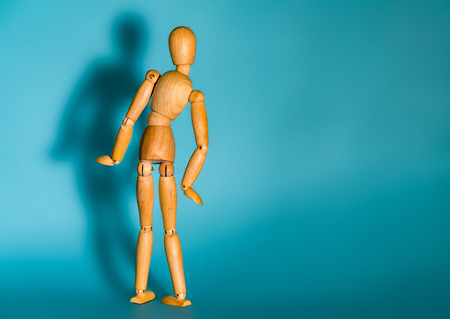It might surprise you that pain is useful.
It’s your body’s way of communicating that something is off.
There are many ways for pain to express itself. So if pain has grabbed your attention and is slowing you down, that’s exactly what it’s supposed to do.
The question then becomes, what are you going to do about it?
Get your spark back
Musculoskeletal pain sure dampens the spark of life. You move hesitantly, fearful of triggering pain. You feel old compared with what you used to do.
Your desires are simple, like stand, walk, or drive without pain. You to do more complex things like take a hike or ride a bike.
Both chronic pain, persistent longer than 3 months, and acute pain, an injury that recently occurred, are helped by this brain-based approach to bodywork.
Common Musculoskeletal Conditions Treated at NeuroBodyWorks
1.Sciatica
Pain stemming typically from around the sacro-iliac joint and referring usually down the leg. Often times worse in the morning or after being in one position for extended periods.
2. Back Pain
Pain stemming from the low, middle or upper back, including stenosis, osteoporosis, osteopenia.
3. Neck/Shoulder Tightness
Hypertonicity of deep muscles in the neck, superficial or deep muscles of the shoulders.
4. Habitual Tension
Chronic areas of hypertonicity based on use.
5. Muscle Tightness/Inflexibililty
Chronically tight areas.
6. Loose Joints
Overly flexible joints are often accompanied by compensating tightening to control the flexibility, but actually need more refined accuracy of control.
7. Poor Postural Habits
Both postural tendencies and attempts to correct postural tendencies can create pain.
8. Joint Pain
Including arthritis, bursitis, tendonitis. Using yourself more optimally puts less stress on the joints.
9. Hip Pain
Ah the center of the body, where the biggest, most powerful muscles of the body reside. They are built to organize dynamically.
9. Scoliosis
The brain organizing the mid-line away from the actual mid-line.
9. Rotator Cuff Injuries
The small muscles connecting the arm and the shoulder blade. Built to move in relationship to the upper back.
10. Frozen Shoulder
Most people think it comes on out of no-where and then you must endure the phases. But there are physical clues, often in the ribs under the armpit in relation to the low back, to what brings it on, and what releases it.
11. Plantar Fasciitis
Inflammation resulting in heel pain that is often helped by improving posture and changing how gravity transfers to the feet through the skeleton.
You’ve tried to do everything right.
You’ve kept a strong core, pulled your shoulders back, try not to slouch, and kept your legs close together like a “good girl.”
You feel plastered with a thousand sticky notes –
One for each thing you’re supposed to remember to do.
How can I try so hard and still be in pain?
“Maybe this is just what it feels like getting older.” But the thought of things only going downhill from here is unimaginable.
 Improvement is less about doing it “right” – and more about stopping all the extra effort.
Improvement is less about doing it “right” – and more about stopping all the extra effort.
Trying to “stand up straight” based on an idea of what that means takes extra effort. You pull your shoulders back by lifting them with muscles. But when you have the underlying relationships to stand up accurately on your bones, you’ll be upright but without effort.
You’ll be surprised at how easy it is to actually use better organization. I won’t lie, it will feel unfamiliar, and even sometimes disorienting at first. But that’s the good thing! It means you’re feeling something new!
But you don’t have to take my word for it. You’ll feel it in the improved flexibility and range of movement. The work comes next, of transforming the familiar habit of over-efforting into tuning yourself more accurately in gravity.
It feels like learning to walk all over again. But this time with an expert, who can show you what it feels like to move more skillfully, with less muscular effort and more awareness.
This approach exposes what’s been in your way – your postural habits, hidden in plain sight.
Working together, we get a good look at your postural “blind spots” and deal directly with those.
By the time we finish, you are simply standing – upright – without effort.
 Clarity is the KEY.
Clarity is the KEY.
Improvement is not about correction, it’s about clarity
What actually works is getting clear about your postural habits.
As long as they’re hiding, it’s super hard to stop the bad ones. Together, let’s bring them into focus.
Once we do that, we’ll introduce new movements to help you build better posture from the inside.
You’ll know you’ve achieved success when you’re standing up straight with zero effort.
Stop trying to do things “just right”! Let’s uncover and conquer what’s in your way! (971) 279-7110

